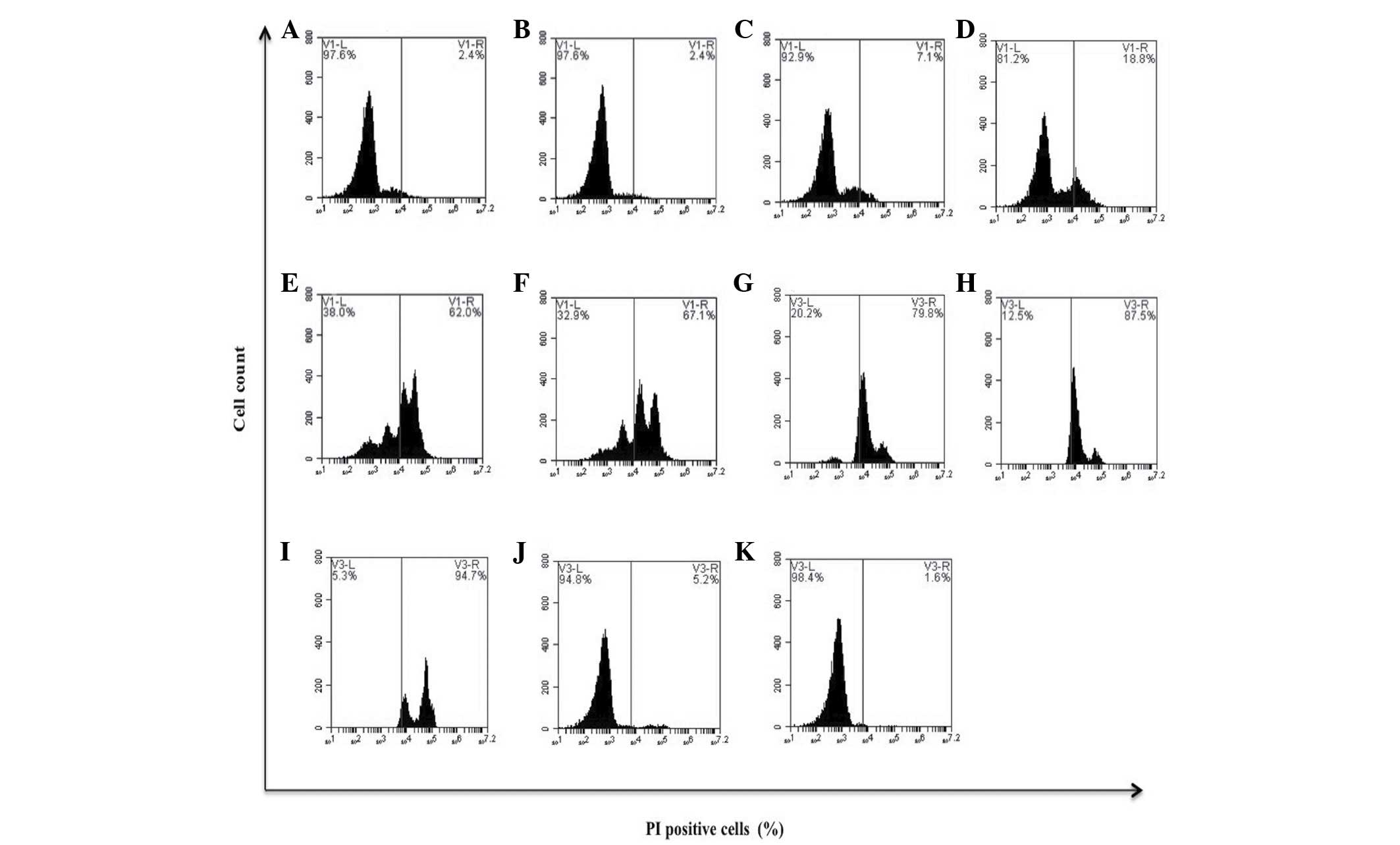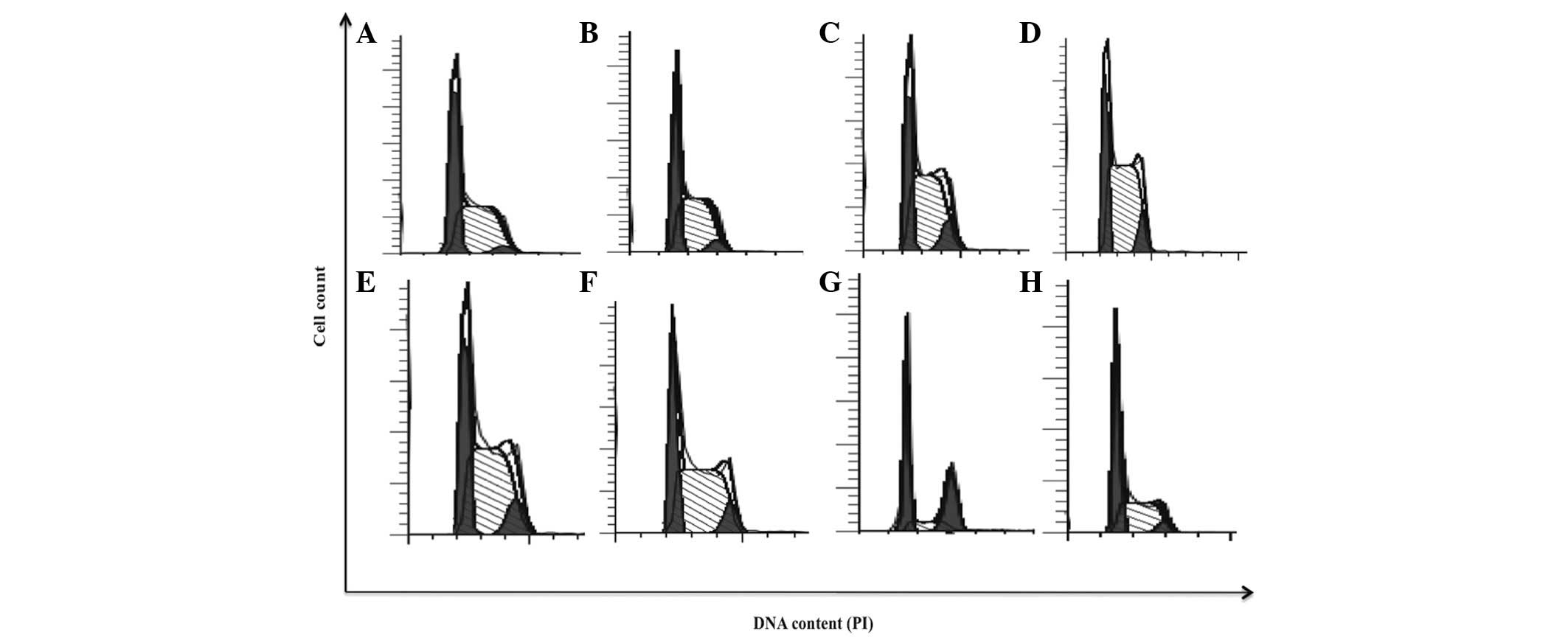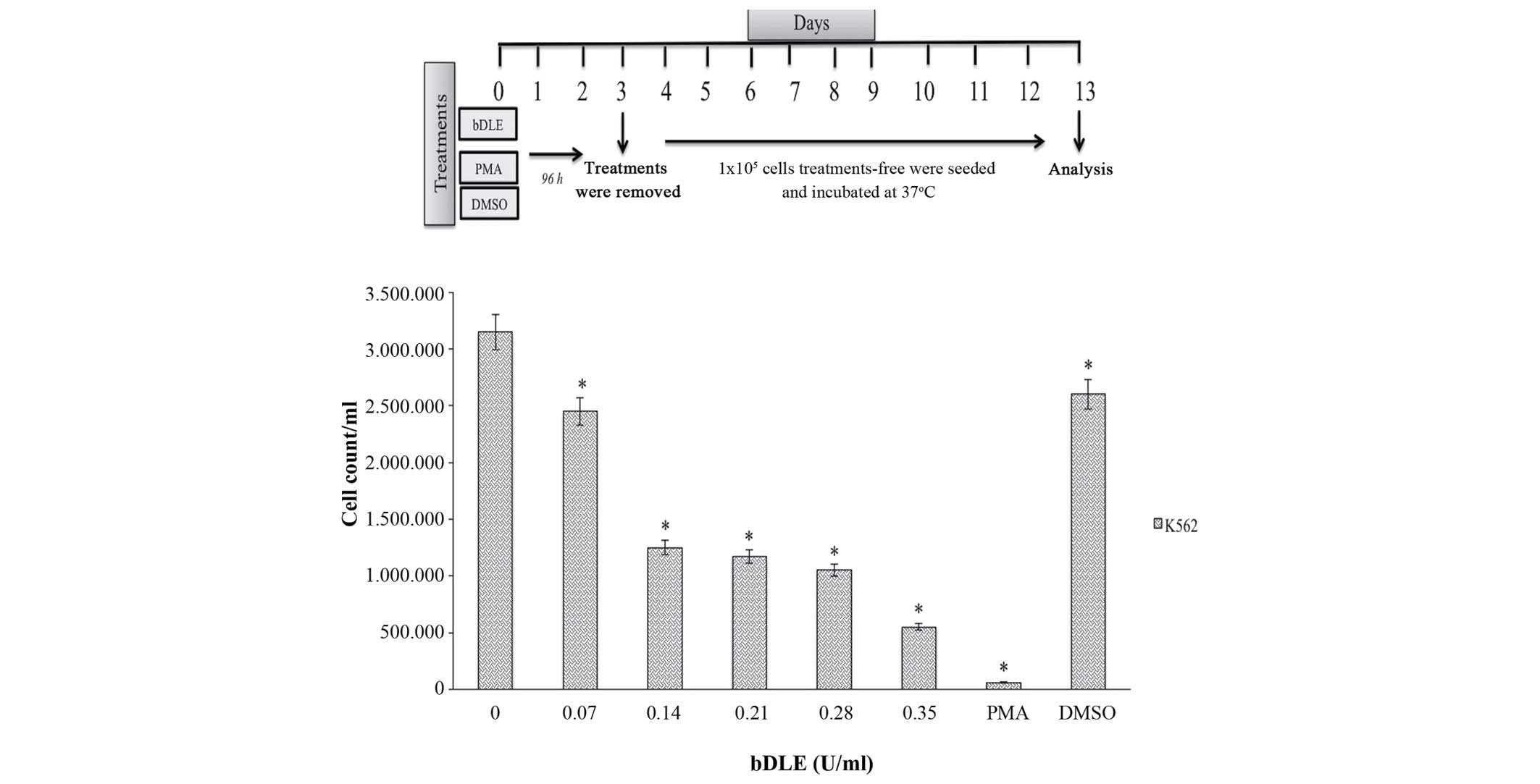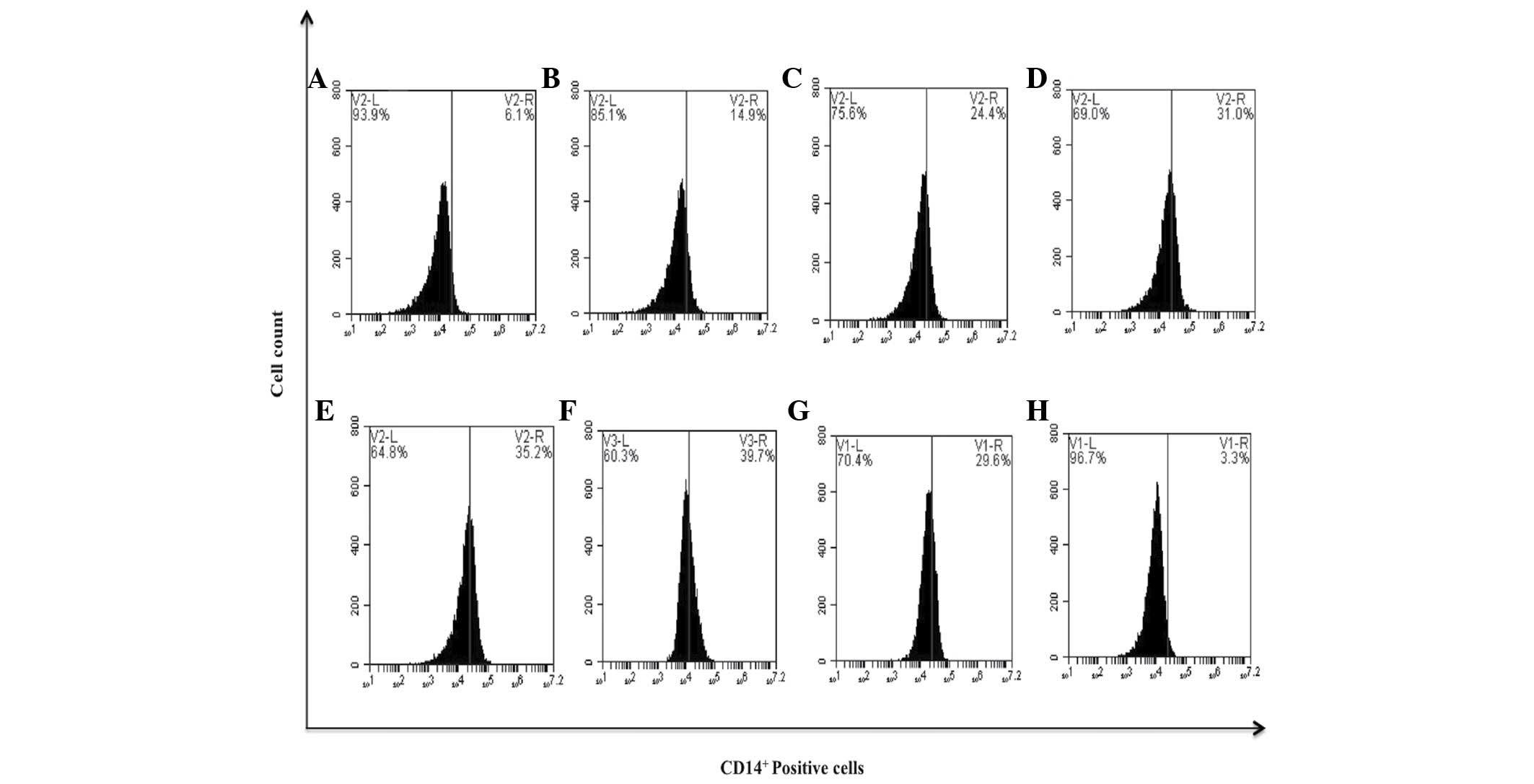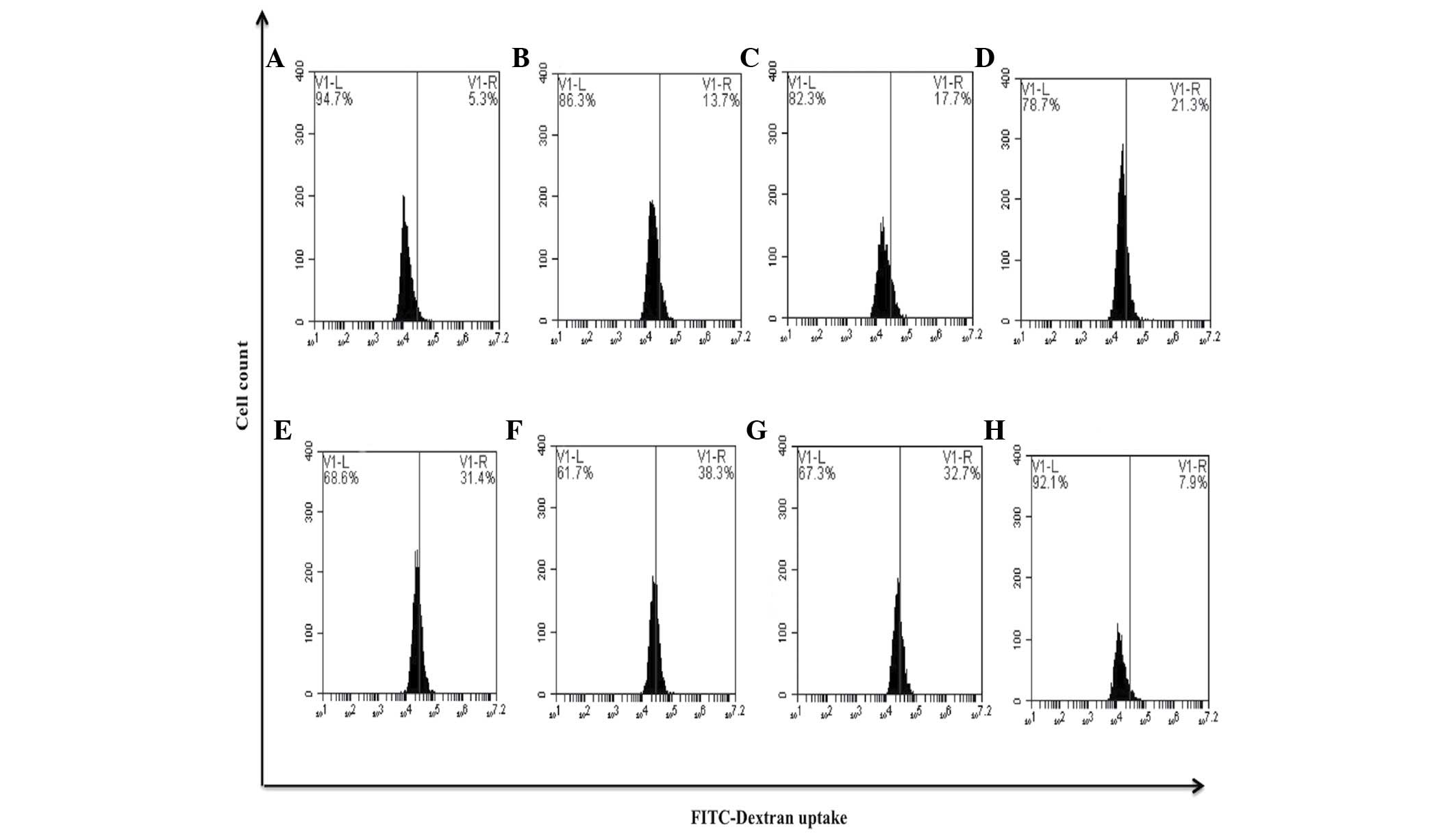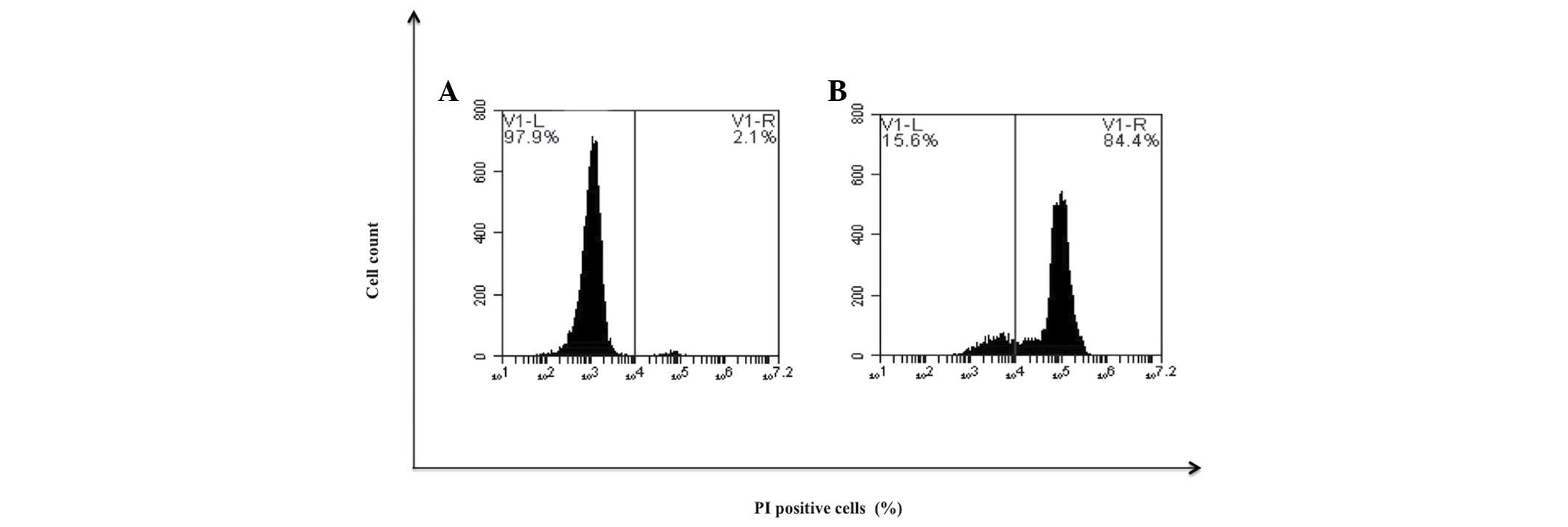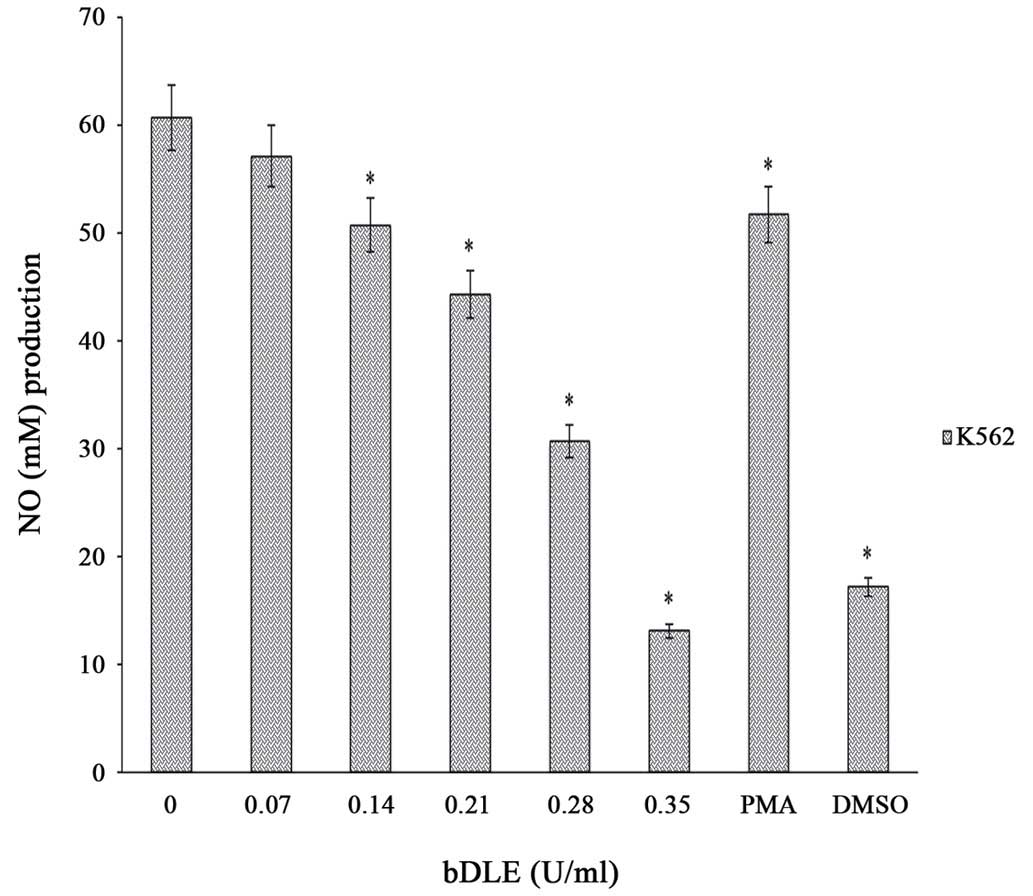Effect of bovine dialyzable leukocyte extract on induction of cell differentiation and death in K562 human chronic myelogenous leukemia cells
- Authors:
- Published online on: October 18, 2016 https://doi.org/10.3892/ol.2016.5285
- Pages: 4449-4460
-
Copyright: © Sierra‑Rivera et al. This is an open access article distributed under the terms of Creative Commons Attribution License.
Metrics: Total
Views: 0 (Spandidos Publications: | PMC Statistics: )
Total PDF Downloads: 0 (Spandidos Publications: | PMC Statistics: )
Abstract
Differentiation induction therapy is an attractive approach in leukemia treatment due to the fact that in blast crisis stage, leukemic cells lose their differentiation capacity. Therefore, it has been proposed as a therapeutic strategy to induce terminal differentiation of leukemic blast cells into a specific lineage, leading to prevention of high proliferation rates. The aim of the present study was to demonstrate the potential of cell differentiation and death induced by bovine dialyzable leukocyte extract (bDLE) in the K562 cell line. For this purpose K562 and MOLT‑3 human leukemic cell lines and primary human monocytes and murine peritoneal macrophages were exposed to bDLE, phorbol myristate acetate (PMA) and dimethyl sulfoxide for 96 h, and the viability, proliferation and cell cycle were evaluated. To determine the lineage that led to cell differentiation, Romanowsky staining was performed to observe the morphological changes following the treatments, and the expression of the surface markers cluster of differentiation (CD)14+, CD68+, CD163+ and CD42a+, as well as the phagocytic activity, and the production of nitric oxide (NO) (assessed by colorimetric assay), cytokines [interleukin (IL)‑1β, IL‑6, IL‑8 and tumor necrosis factor‑α] and chemokines [chemokine (C‑C motif) ligand (CCL)2, CCL5 and chemokine (C‑X‑C motif) ligand 8] in cell supernatants was assessed by flow cytometry. The results of the present study reveal that high doses of bDLE increase the cell death in K562 and MOLT‑3 lines, without affecting the viability of human monocytes and murine peritoneal macrophages. Furthermore, low doses of bDLE induce differentiation in K562 cells towards a monocyte/macrophage lineage with an M2 phenotype, and induced moderately upregulated expression of CD42+, a megakaryocytic marker. Cell cycle arrest in the S and G2/M phases was observed in bDLE‑treated K562 cells, which demonstrated similar phagocytic activity, NO levels and cytokine and chemokine production to that of PMA‑treated cells. The present study demonstrates that bDLE exhibits an antileukemia effect, suggesting that it may be an effective candidate for leukemia treatment.




